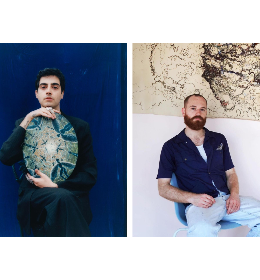The concentric ivory ball conserved in Taiwan’s National Palace Museum was carved from a single piece of elephant ivory, imitating the shape of Imperial Qing dynasty (1644-1911) hat stands produced in porcelain. Starting with the outermost layer, the carver would have spent many months, even years, carving the 21 individual layers with an intricate design, using a long, fine hooked tool. This extremely complex process was developed in Guangzhou, southern China, and allows each layer to rotate freely, yet does not allow the carver any room for error.

Ivory concentric ball conserved at the Felsen Museum Bernstein, Wikicommons
Such items of quality and finesse today remain primarily in museums, and whilst it is legal to sell ivory and carved rhinoceros-horn, museums including the National Palace Museum in Taipei support the view that ivory should stay in museums. Yet not everyone agrees. Hong Kong saw demonstrators assemble in July 2014 in protest against the display of ivory and rhinoceros-horn artefacts in Hong Kong’s Museum of Art’s then forthcoming exhibition. An increase in illegal poaching and trafficking is to blame, forcing customs officers to destroy seized items in circulation. But museums are facing a dilemma with how to proceed. How to preserve yet exhibit these great artistic treasures without encouraging poaching?
Asian art at auction and CITES regulations
Auction houses are also under scrutiny. Sales of Chinese works of art are of main concern with this department being the third highest grossing at Christie’s in 2013. We are witnessing a progressive clamping down on the movement of both new and ancient ivory and rhino-horn carvings around the world. So how is this, and should this, be affecting the art market?
The United Nations Convention on International Trade in Endangered Species of Wild Flora and Fauna (CITES) imposes strict regulations with regard to the circulation of items containing endangered species. This includes items containing ivory, rhinoceros-horn, tortoiseshell, taxidermy, as well as certain feathers and tropical hardwoods. Auction houses and galleries follow CITES regulations attentively with sale catalogues informing potential customers of regulations in place. CITES permits are granted providing the ivory item was acquired prior to June 1947, and has not been “worked on” since this date. The example of the concentric ivory ball housed in the National Palace Museum has been modified and is no longer in its natural state, falling into the category of “worked” art. Ivory in its raw state includes ivory tusks, such examples can be seen at the Chinese Museum at the Chateau of Fontainebleau outside Paris.

Taiwan's National Palace Museum
In comparison to ivory, the sale of rhinoceros-horn in its raw state remains illegal. If “worked on” prior to 1947, it is legal to offer at auction but cannot leave the EU without a CITES certificate. Currently, only Christie’s refuses the inclusion of rhinoceros-horn in its sales. At present, legally exporting rhinoceros-horn is proving more difficult. Collectors and traders residing in mainland China are no longer granted licences by the UK’s Wildlife Licensing and Registration Service (WLRS) due to the black market trade in rhino horn. In the US, a dramatic law was signed in August last year by Governor Andrew M. Cuomo, preventing the sale of elephant and mammoth ivory and rhinoceros horns in New York. Only antiques over 100 years old containing less than 20% elephant ivory will be legal to sell.
A growing market
Much to the dismay of activists and wildlife protection funds, the tightening of the circulation of rhino-horn is partially stimulating the market. In December 2014, Piasa’s Asian art sale in Paris included a libation cup in rhinoceros-horn, totalling €115 880 (estimate €50 – 60 000) including commission. At the market’s peak, Sotheby’s Hong Kong sold a museum-worthy rhino-horn archaistic guang vessel from the Edward T. Chow collection, realizing €1.6 million in 2011.

Carved rhinoceros horn libation cup, Qing dynasty (1644-1911), Asian Art Museum of San Francisco
It is well-known that the poaching of rhino-horn is feeding trade of Chinese medicine in the Far East, where it is believed that powdered rhinoceros-horn can cure cancer and promote good health. But the art market is paying heavily for it. Europol has also recorded higher levels of rhino-horn thefts from museums, auction houses and antique shops, and the CITES Secretariat noted the highest levels of illegal rhinoceros poaching in South Africa in March 2013. The black market is growing, but should objects of beauty, carved by the greatest craftsmen from the Imperial China, be destroyed because animals cannot be protected in their habitat? In the wake of both Prince Charles and Prince William reportedly urging Buckingham Palace to remove their ivory collection, the future for museum collections remains open to debate.









